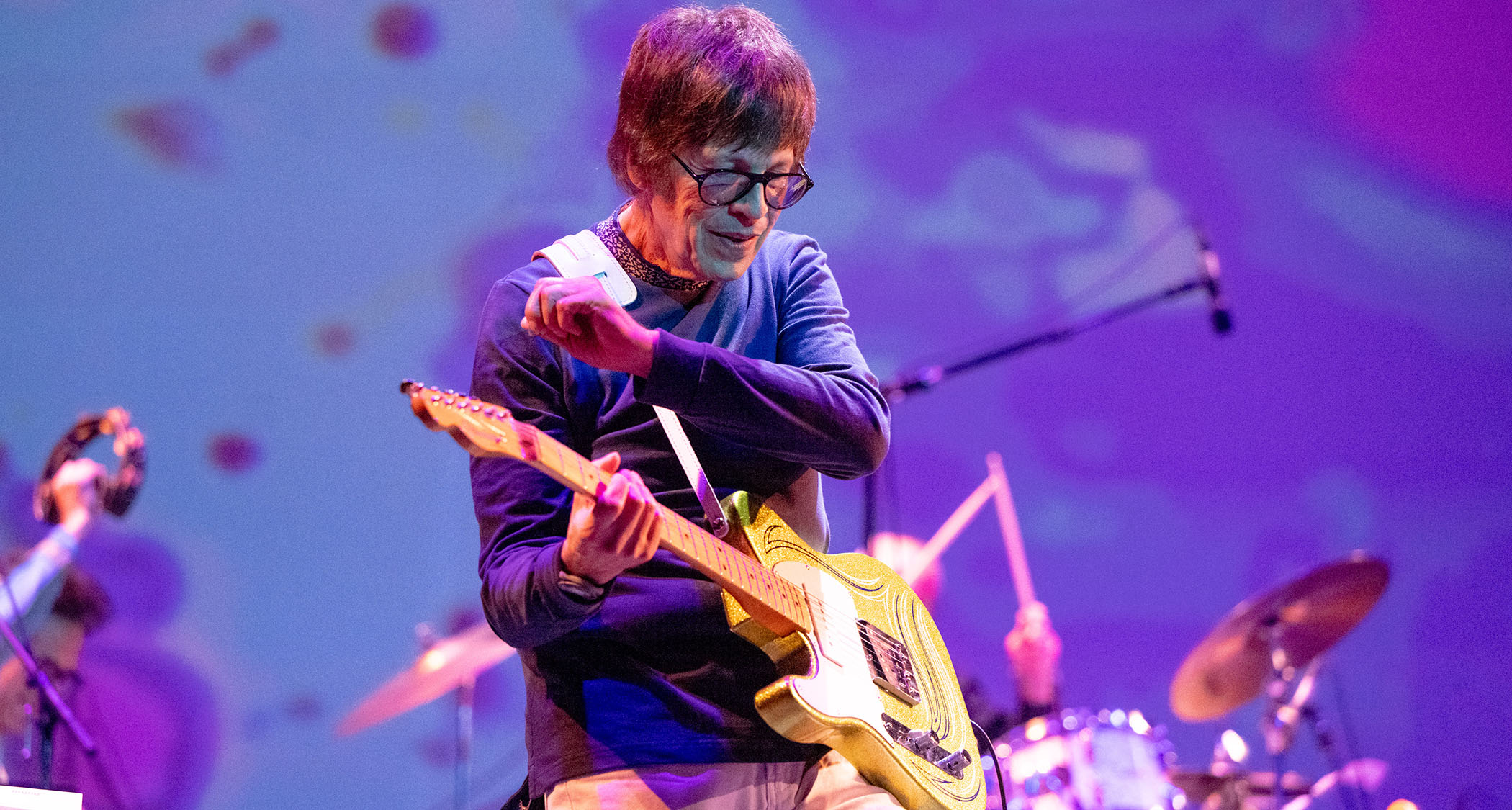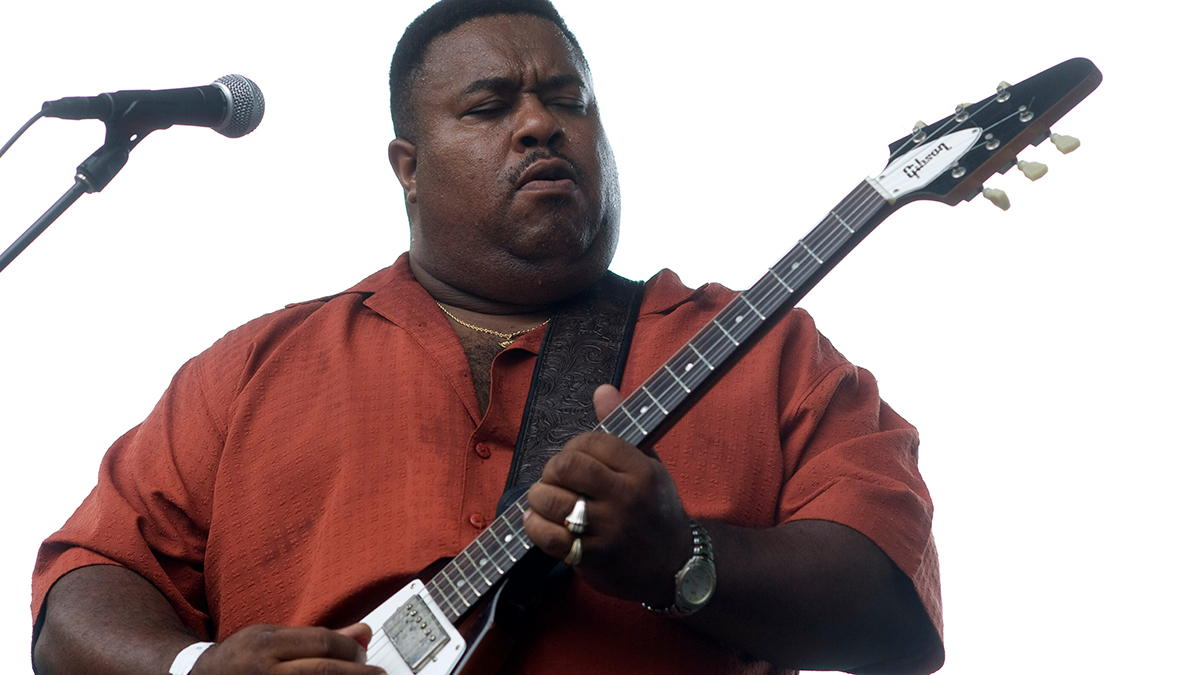“I paid $2,800 for it at a vintage dealer. Now, I think the guitar would be worth six figures”: What was Elliot Easton’s greatest gear find? The Cars legend reveals all – and argues that today’s players have never had it better
The former Cars six-stringer talks early guitar exploits, the golden age of vintage-guitar buying, and why he’s not as jazzed about amps as he is about guitars themselves

This month on Bought & Sold we have the great Elliot Easton sitting in with us to share his life story in gear and to share his guitar-buying wisdom from decades in the business.
As a southpaw, the former Cars guitarist has not enjoyed the same bevy of options that right-handed players have, but over the years he's got just what he needed...
What was the first serious guitar you bought with your own money?
“The first serious guitar I bought with my own money was a Favilla acoustic. There was a music store in Freeport, Long Island, called Gracin’s Music.
“At the time, I had a cheap Japanese electric that I got for my bar mitzvah, and it was a really crummy guitar. I got a job working at a bakery making bagels, and I saved up my money for my first real guitar. It was all-mahogany, left-handed and one of their less expensive concert-style guitars. I still have it!
“My first good electric was a Telecaster. It seemed like most of my heroes were playing them, like Robbie Robertson, James Burton and Roy Buchanan. I just love Telecasters; there was something about them that just got me.
“They seemed so iconic – and I wanted one. So, through working at the baker and washing dishes after I got my worker’s permit, I’d earned enough to buy one. I ordered this left-handed, blonde 1971 Fender Telecaster. I think it was $220 with a case and tax.”
All the latest guitar news, interviews, lessons, reviews, deals and more, direct to your inbox!
What was the last guitar you bought and why did you buy it?
“A Martin D-28 Bigsby. It’s like Merle Travis’s D-28, which has a Bigsby neck with six tuners on one side of the headstock; it looks like a Fender. I just thought it was super cool. That guitar is just superb. I’ll have to get it over to my favourite guitar guy in LA to have it set up.”
What’s the most incredible find or bargain you’ve ever had when buying guitars?
“Gosh… Going back to the ’70s, when The Cars first started making money, I could buy guitars and the prices weren’t what they are now. The most amazing one – and this was part of a Guitar World centrefold – was a 1964 left-handed Stratocaster, which was Burgundy Mist-colored.
“It was in unplayed condition and it had a white Tolex case. It still had the tags and a little booklet hanging from the pegs. It even had the receipt inside that said that some young fella on an Air Force base bought it and had tricked it out in the coolest custom colour.
“I paid $2,800 for it at a vintage dealer. Now, I think the guitar would be worth six figures; it’s so rare and pristine. It even had the original strings!”
What’s the strongest case of buyer’s remorse you’ve experienced after buying gear?
“You know… I’ve gotten some great ones, so I don’t know if I’ve ever had that. You can’t believe the guitars that were flying around. At that time – and at that age – I don’t know about other people, but I couldn’t afford to have two guitars at the time; I had to get rid of a guitar to get a different guitar. I went through a bunch.”
Have you ever sold a guitar that you regret letting go of?
“Most of the ones I’ve let go I regret letting go because I sold them early and they’re worth so much more now. I really wish I still had that Burgundy Mist Strat, a ’54 Les Paul Goldtop and a Lake Placid Blue Tele that I had. But there are a lot of valuable guitars I’ve had – and still have.”
We live in a time when there are more great guitars available to us at lower prices than there ever were when I was a kid
What’s your best buying tip for anyone looking for their ultimate guitar?
“My best advice is to buy based on your budget. We live in a time when there are more great guitars available to us at lower prices than there ever were when I was a kid. The Epiphone and Squier guitars that you can get now, with a good setup, will play great and sound very close to more expensive versions.
“So buy based on your budget – and buy the best one you can get because you won’t grow out of it and get tired of it. You’ll always play it and it’ll always be good. Even the most expensive guitars are only as good as their setup. That’s my feeling.”
When was the last time you stopped and looked in a guitar shop window or browsed online and what were you looking at?
“Let me think about that… I was looking at some Epiphones and Gibsons the other day, like the Flying V and the copper-coloured Joe Bonamassa Epiphone [1955 Les Paul Standard Copper Iridescent] based on that rare copper metallic colour finish with P-90s that Joe has the original of.
“But the thing about being a lefty is there’s not as much available. It’s not like I can just go on a website, see a bunch of guitars, and think, ‘Well, I’d like to get that one for me.’ It’s a different process.”
If forced to make a choice, would you rather buy a really good guitar and a cheap amp or a cheap electric guitar and a top-notch guitar amp?
I love great amps, but I don’t know what ‘rectifier’ or ‘tube’ is in that one or this one. I’m not an amp geek in that way
“That depends on the situation. I’ve got a ton of really good guitars and some great amps, too. If the situation is that I’m somewhere and I have to make a choice… well, it’s a hypothetical question [laughs].
“I can certainly say the passion I have for guitars is not the same for amps. I love great amps, but I don’t know what ‘rectifier’ or ‘tube’ is in that one or this one. I’m not an amp geek in that way.”
If you could only use humbuckers or single coils for the rest of your career, which would it be and why?
“Interesting question. I think it would be single coils. If I could only have one electric guitar, it would be a Telecaster. It’s kind of in my DNA and it was my first good electric guitar. I just feel at home on one. You can fatten up a Tele and get it sounding close to a Les Paul, though it might have a different sort of character – but it’s tough to get Tele tones out of a humbucker.”
Elliot’s go-to rig
‘’A lot of my gigs these days are one-offs. The last tour I did was filling in for Waddy Wachtel with The Immediate Family, and I was using a Les Paul because I was filling a similar sonic space as Waddy.
It’s a concept guitar based on a single question: ‘If the single-cutaway Les Paul was not discontinued in 1960, what might a 1964 Les Paul look like?’
‘’That Les Paul was of my own design. It’s a concept guitar [produced by the Custom Shop] based on a single question: ‘If the single-cutaway Les Paul was not discontinued in 1960, what might a 1964 Les Paul look like?’
“I went to the Firebird colour chart and chose Pelham Blue, with black hardware and the black chrome dome knobs that [model] had in the ’60s, nylon saddles and double stingers in the headstock. I have a tiki character [on the headstock] – it’s like my little mascot.
“So I played that Les Paul, which has a thin ’60s neck and is chambered. It’s light. And with the amp, I just like a good sweet-sounding Fender with clean headroom; I needed that because I had to be able to get back to a pristine sound for some of the parts.”
- This article first appeared in Guitarist. Subscribe and save.
Andrew Daly is an iced-coffee-addicted, oddball Telecaster-playing, alfredo pasta-loving journalist from Long Island, NY, who, in addition to being a contributing writer for Guitar World, scribes for Bass Player, Guitar Player, Guitarist, and MusicRadar. Andrew has interviewed favorites like Ace Frehley, Johnny Marr, Vito Bratta, Bruce Kulick, Joe Perry, Brad Whitford, Tom Morello, Rich Robinson, and Paul Stanley, while his all-time favorite (rhythm player), Keith Richards, continues to elude him.
You must confirm your public display name before commenting
Please logout and then login again, you will then be prompted to enter your display name.
![The Cars - Touch And Go (1984) [Live] (CC) - YouTube](https://img.youtube.com/vi/N0qTsqUhCXA/maxresdefault.jpg)


